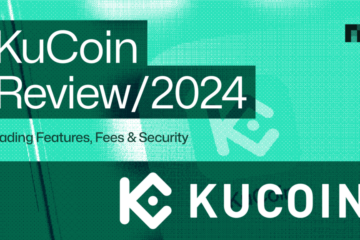While some people in financial circles still suspect cryptocurrencies, many others have since seen the light and are changing their perspective about benefits they never knew about. Every once in a while, an institution comes that redefines the capital markets with creative products within the digital asset community to make crypto enthusiasts go wild with excitement.
Maple Finance is shaking up the cryptocurrency sector, especially global lending, with innovative products designed for institutional borrowers. If you’re an institutional borrower looking to access funds more efficiently or a lender interested in getting guaranteed yields for your efforts, we’ve got you covered. In this guide, we shall answer the question of Maple Finance, how it works, and all other details surrounding it.
What is Maple Finance?
Maple Finance is a digital asset lending platform within the decentralized finance (DeFi) sector connecting institutions with structured opportunities such as yield-bearing by facilitating capital flow via secured, on-chain loan products. By offering a two-pronged approach targeting permissionless and know-your-customer (KYC) fronts, the platform supports DeFi native users and institutional players looking for loans or yield-generating opportunities from crypto lending pools.
When business people and other investors seek alternative solutions to the challenge of borrowing enough funds to fund their growth, it can be frustrating to feel locked out because of the slow, costly, and sometimes restrictive regulations in the existing marketplace. Maple DeFi has introduced an alternative to help institutions manage their cash flow efficiently and seize investment opportunities by offering an efficient and more flexible alternative than the traditional capital market.
Maple operates a digital lending protocol that goes beyond where other DeFi protocols reach by offering undercollateralized loans to institutions. Select cryptocurrencies fully back loans provided through the Maple and Syrup lending pools after undergoing rigorous assessment, while the permissioned nature of the yield sources guarantees quality and security. Unlike its competitors, Maple is open to anyone interested in becoming a yield earner or liquidity provider participating in lending crypto to prime corporate borrowers.
Who Created Maple?
Sid Powell, a career institutional banker, is the CEO and co-founder of Maple Finance with Joe Flanagan. Powell’s background in institutional banking initially saw him treat cryptocurrencies and blockchain technology with skepticism and disdain until he became a bank client. After learning about Web3, both Powell and Flanagan were convinced that the traditional finance lacks efficiency and needs an emerging technology as a solution.
To address this, they created Maple Finance, a DeFi protocol designed to introduce debt capital markets 100% on chain via smart contracts, eliminating the time and cost constraints and leveraging blockchain for immutability. Today, Maple is a team run by over 25 experts with staff from leading crypto firms like BlockFi, Kraken, Bank of America, Gemini, and MakerDAO, just a few blue-chip organizations.
How Does Maple Finance Work?
The Maple protocol runs on the Solana and Ethereum blockchains, and like all other DeFi projects, it thrives on the participation of cryptocurrency lovers. Nonetheless, it differs slightly from other DeFi protocols as it primarily targets corporate borrowers and institutional lenders. The primary players within the Maple ecosystem are lenders, institutional, borrowers, pool delegates, and stakers, with each group playing a distinctive role, as explained below.
- Institutional Borrowers: The group mainly consists of market makers, hedge funds, and some cryptocurrency exchanges that take advantage of the platform’s aggregated resources whose financial activities are recorded on the blockchain. Once they procure loans, the borrowers vetted by the platform pay an establishment fee that facilitates pool delegates and Maple’s DAO, which manages the treasury funds.
- Pool delegates: This team, selected by the Maple Finance team to facilitate the platform’s capital efficiency, vets borrowers and assesses their ability to service their loans. They manage lending pools by gathering information that directly influences the terms and conditions of every loan, with funds arriving from selected liquidity policies.
- Lenders: Lenders deposit funds into designated liquidity pools and have the opportunity to earn a fixed yield for providing the funds, which are administered by the pool delegates. In addition to the interest rate lenders receive, lenders receive other incentives, including MPL crypto incentives.
- Stakers: Stakers provide “loss capital” by staking Balancer Pool Tokens (BPT) to cover any eventual losses in the event of a default. Since they take on risks on the loans, the platform rewards their efforts by distributing a portion of the loan yield in addition to MPL token staking rewards.
How to Use Maple?
If you are interested in becoming a lender, consider Maple DeFi, where lenders receive a stable yield from carefully selected institutional borrowers. All you need to do is join a liquidity pool, deposit your funds, and earn interest depending on the liquidity asset. Pool delegates determine the yield’s value and the loan’s conditions. As a lender, you can also benefit by earning MPL by participating in liquidity mining.
You could also choose to provide pool cover by providing a financial buffer to mitigate risks associated with loans. Pool cover takes care of the losses in the event a borrower defaults, but the positive aspect is that those offering pool cover earn income through MPL rewards.
Staking MPL is another innovative way to receive passive income, such as depositing your idle MPL tokens directly into the platform. Maple says on its website that it plans to employ 50% of its revenue in an MPL buyback plan, which will be distributed to stakers as a reward for supporting the protocol. If you wish to become a pool delegate, you could also be selected based on your reputation for competence, and you can earn by receiving a portion network fees accrued from borrowers or getting a portion of the establishment fee.
What is SYRUP?
SYRUP is a permissionless yield token powered by Maple Finance and specifically designed for the DeFi community. Users who deposit funds on the protocol gain access to yield sourced from the platform’s over-collateralized loans given to large crypto-focused institutions. Since SYRUP ascribes mainly to DeFi, lenders don’t undergo any know-your-customer (KYC) protocols before they can deposit funds and start earning yields.
Besides earning yield by depositing funds, SYRUP users can also earn Drips, a primary procedure for distributing ownership of the Maple DeFi ecosystem. Users can increase the amount of Drips they earn by participating in several actions, such as using one of their wallet integration partners to deposit funds into SYRUP or using DeFi to leverage SyrupUSDC.
The SYRUP token governs the entire Maple ecosystem, which includes both Maple and Syrup. SYRUP was designed to replace the older MPL token, and holders converted their tokens from MPL to SYRUP.
SYRUP Utility
The use of Maple has the potential to expand as the crypto market continually goes mainstream and the project itself develops further. Interested actors can use Maple and SYRUP to achieve some of the following goals:
- Arbitrage Trading: SYRUP is a popular cryptocurrency in the market, and its price is always fluctuating. You can earn extra SYRUP when you buy low and sell high on a cryptocurrency exchange. Look for cryptocurrency exchanges like Bitget and others that provide numerous SYRUP trading pairs to fully benefit from arbitrage trading.
- Stake SYRUP and Earn: Users can generate extra income by staking or lending SYRUP. Numerous exchanges offer these opportunities to help SYRUP holders earn an income using their idle digital assets.
- Send or pay SYRUP: If you feel a little philanthropic and want to gift your friend, donate to a charity, or participate in a fundraiser, SYRUP is an alternative way to achieve your dream. You can send SYRUP tokens to your benefactors through their wallet addresses.
SYRUP Tokenomics
SYRUP now serves as the native token of the Maple protocol and replaces the MPL token. Upon migration, the proposal was to convert 1 PML to 100 SYRUP, which ensured no dilution for existing MPL holders. The total supply of SYRUP is projected to reach 1.228 billion by September 2026, reflecting a planned 5% annual inflation.
The platform issued approximately 1.15 billion SYRUP during the migration, which included creating at least 1 billion SYRUP tokens during the MPL-to-SYRUP migration. The plan included a well-structured inflation calendar for the allocation of about 100 million tokens scheduled for October 2024. The issuance of SYRP tokens was broken down as follows:
- New SYRUP supply: 1,000,000,000 tokens
- 10% inflation schedule: 100,000,000 tokens
- From inflation to October 2024: 54,930,000 tokens
- Expected supply by September 2026: 1,228,740,800 tokens
SYRUP Listing on Binance
After being longlisted on cryptocurrency exchange Binance’s Alpha list, Maple Finance’s SYRUP was finally listed on May 6, 2025, and started trading at 15:00 (UTC). The relatively successful DeFi platform with a large user base has the potential to generate significant volumes both for the exchange and the protocol itself, in addition to the broad exposure. As it opened for trading, the following pairs, SYRUP/USDT and SYRUP/USDC were available, with many more to be added eventually.
For more info, check out the listing details of Maple Finance (SYRUP) on Binance.
How to Buy Maple Finance (SYRUP)
If you’re interested in buying Maple Finance (SYRUP), the procedure is simple, but there could be slight differences depending on your location and the exchange you choose. Here is a step-by-step guide to buying Maple (SYRUP):
- Step 1: Create an account: Download an app from your preferred exchange and proceed with the signup process, which could include needing a valid government-issued ID and proof of address. The process should take a few minutes.
- Step 2: Add a payment method: Click on the payment method box and select your preferred method, whether it’s a bank account or debit/credit card.
- Step 3: Select Buy & Sell: Proceed to the Buy section and click the “Buy “tab.
- Step 4: Select Maple Finance: Search for Maple Finance from the list of assets, and when you locate it, tap to open it.
- Step 5: Enter the amount you wish to buy. Using the number pad, input the amount of money you want to spend, and the system will convert it into the amount of SYRUP you will receive.
- Step 6: Finalize Purchase: Tap the “Preview Buy” button when you’re ready. Review the details, and once you’re satisfied, click “Buy now” to confirm your purchase.


What is MPL?
MPL is the Maple Finance ecosystem’s native token. The ERC-20 token inherited the profit distribution standards of the ERC-2222 token standard. MPL plays an integral role in the platform’s operations and MPL token holders can participate in activities like staking and offering loans and the governance process.
MPL Tokenomics
The MPL tokens have a fine amounting to 10,000,000 tokens, of which some 500,000 were involved in a Balancer liquidity Bootstrapping tool that lasted 72 hours. The distribution schedule for MPL tokens is as follows:
- Maple Treasury 14% – 1,400,000 tokens
- Seed Investors 26% – 2,600,000 tokens
- Public Auction 5% – 500,000 tokens
- Liquidity Mining 30% – 3,000,000 tokens
- Team and Advisors 25% – 2,500,000 tokens
- Total 100% – 10,000,000 tokens
Conclusion: The Future of Maple
Maple saw a problem in the world of finance and stepped in to solve it with the general desire of leveraging over-collateralization, where the firm believes it can help economic actors who feel left out by traditional systems.
Over time, the institution’s TVL has climbed steadily to over $800 million. The growth highlights an increasing demand for DeFi products and high yields, especially among accredited institutional investors from the institutional capital marketplace.
The recent launch of SyrupUSDC, democratizing access to institutional yields for retail investors, has also expanded its user base. If all pieces fall into place and institutional adoption grows, there’s every chance that Maple products will be used across the board by users in the financial sector, from the credit card industry to real estate, lending markets etc.
FAQs
Is Maple DeFi?
Maple is a decentralized finance (DeFi) platform specifically designed to serve institutional-grade borrowers onchain. The protocol facilitates undercollateralized lending, especially to traditional investors and crypto-focused businesses, by introducing a transparent, scalable option to regular credit facilities.
Is Maple Finance on Ethereum?
Maple is built on the Ethereum and Solana blockchain and offers under-collateralized loans, a rare feature within the DeFi space.
Is Maple Finance safe?
Maple Finance is a relatively safe and secure platform for institutional lending within the DeFi space. While there could be general risks associated with the cryptocurrency industry, Maple has instituted numerous security protocols, such as KYC for borrowers and lenders and strict due diligence conducted by the platform’s Pool Delegate. The measures have so far succeeded in eliminating fraud, ensuring Maple maintains its reputation as a secure platform.
What is Maple Finance token utility?
The Maple Finance token (MPL) can be used for different functions within the Maple ecosystem. While it is mainly used as the platform’s governance token, which allows holders to vote on proposals and take part in making protocol decisions, users can earn some passive income by staking MPL, where they earn a share of the platform’s network fees. Additionally, the token can be used to create and participate in the platform’s lending pools.
Who is the founder of Maple Finance?
Maple Finance was launched in 2021. The founders are Sidney Powell and Joe Flanagan. Powell currently serves as the CEO. Powell has a rich background in debt capital markets and institutional banking.
Is Maple a good investment?
Maple has enabled loans of over a billion USD and is still growing, meaning there are positive signs of its continued growth. While it’s hard to give a straight answer, the latest developments, including listing in Binance, should be a vote of confidence in the platform, and, as such, it’s something every keen investor can keep an eye on at the very least.
 Bitcoin
Bitcoin  Ethereum
Ethereum  Tether
Tether  XRP
XRP  Wrapped SOL
Wrapped SOL  USDC
USDC  TRON
TRON  Lido Staked Ether
Lido Staked Ether  Dogecoin
Dogecoin  Cardano
Cardano  Figure Heloc
Figure Heloc  Wrapped stETH
Wrapped stETH  Wrapped Bitcoin
Wrapped Bitcoin  WhiteBIT Coin
WhiteBIT Coin  Zcash
Zcash  Hyperliquid
Hyperliquid  Bitcoin Cash
Bitcoin Cash  Chainlink
Chainlink  USDS
USDS  Binance Bridged USDT (BNB Smart Chain)
Binance Bridged USDT (BNB Smart Chain)  LEO Token
LEO Token  Stellar
Stellar  WETH
WETH  Wrapped eETH
Wrapped eETH  Ethena USDe
Ethena USDe  Litecoin
Litecoin  Monero
Monero  Coinbase Wrapped BTC
Coinbase Wrapped BTC  Avalanche
Avalanche  Hedera
Hedera  Sui
Sui  Shiba Inu
Shiba Inu  Uniswap
Uniswap  Dai
Dai  Polkadot
Polkadot  Ethena Staked USDe
Ethena Staked USDe  Toncoin
Toncoin  USDT0
USDT0  Cronos
Cronos  Canton
Canton  Mantle
Mantle  World Liberty Financial
World Liberty Financial  sUSDS
sUSDS  MemeCore
MemeCore  PayPal USD
PayPal USD  Bittensor
Bittensor  NEAR Protocol
NEAR Protocol  USD1
USD1 


